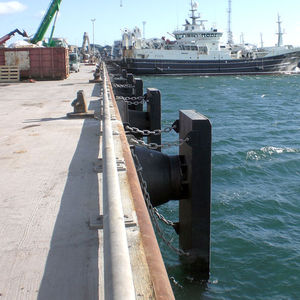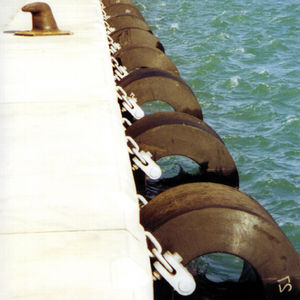
- Products
- Harbor fender
- DockGuard Ltd
Harbor fender for pontoonarch
Add to favorites
Compare this product
Characteristics
- Application domain
- for harbor
- Applications
- for pontoon
- Configuration
- arch
- Length
1,000 mm
(39 in)
Description
Construction: DockGuard Leg Fenders are compression moulded into a rhomboid shape for optimum energy absorption. The twin notches in the sides of each fender ensure it will compress at exactly the same point at all times. The legs of the fenders can be combined with additional legs to form either a simple V-fender, or a larger and more sophisticated modular fender system.
Energy/Technical: The geometry of the design has been optimised for maximum energy absorption combined with a low reaction force. As a result, the normal compression on a leg fender is 57.5% and the maximum reaction is 65% of its height.
The legs vary in height from 150mm high to 1600mm and are manufactured in lengths from 750mm to 3000mm, depending on the required size and application.
Key benefits: DockGuard Leg Fenders are of a high performance, modular design that delivers remarkable flexibility in application, and the opportunity to integrate the units into sophisticated fendering solutions. It has high energy absorption in proportion to weight of rubber, and the compact design and small foot print allow for flexible orientation on any quay wall. The compounds and polymers used are highly resistant to the effects of ozone degradation, UV radiation and water-borne oil pollution; and their easy installation, low maintenance and long life make them a low cost alternative to arch fenders.
Applications: Ideal for any application with limited space for installation such as piers, pivot pillars and fender piles.
Catalogs
No catalogs are available for this product.
See all of DockGuard Ltd‘s catalogs*Prices are pre-tax. They exclude delivery charges and customs duties and do not include additional charges for installation or activation options. Prices are indicative only and may vary by country, with changes to the cost of raw materials and exchange rates.



